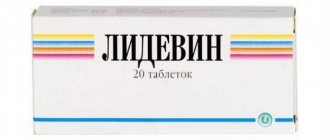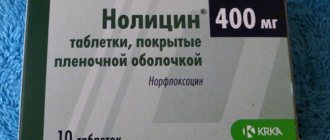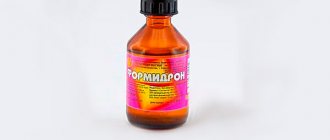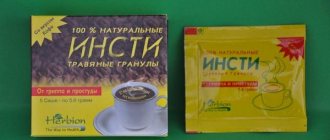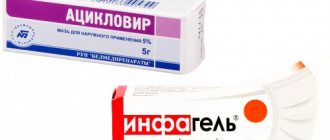© Author: Z. Nelly Vladimirovna, laboratory diagnostics doctor at the Research Institute of Transfusiology and Medical Biotechnology, especially for SosudInfo.ru (about the authors)
Thrombin is one of the participants in the blood coagulation mechanism, and at the same time, it is far from unimportant. The concepts that have a common root: “thrombus”, “thrombosis”, “thrombosis”, “thrombin time” definitely relate to the process of formation of clots, which, in the case of injuries with damage to the vascular wall, stop bleeding, prevent the loss of precious fluid, which often saves a person’s life. Or, on the contrary, clots formed in the focus of endothelial damage by the pathological process, breaking off and moving with the blood flow, close the lumen of the vessel and thereby create life-threatening situations.
Heart and vascular diseases + thrombin
It’s another matter if these processes begin to occur when there is no need for this, but there is a pathology that leads to damage to the lining of blood vessels and the development of local reactions with the activation of coagulation factors:
- Atherosclerosis;
- Vasculitis;
- Oncological diseases;
- Autoimmune processes;
- Atrial fibrillation;
- Blockades of various kinds;
- Heart defects;
- Rheumatism;
- Replacing the patient’s own (failed) heart valves with artificial or biological models;
- Infections;
- Shock.
Although in such cases, in general, the hemostasis system seems to remain normal, but pathological changes in the endothelium disrupt the activity of the coagulation and anticoagulation systems at the site of the vessel lesion. Local formation of thrombin (which, as is known, does not exist in ready-made form in the absence of bleeding in plasma) creates conditions for the formation of blood clots, which increase the risk of developing thrombosis and thromboembolism many times over.
For example, doctors often talk about the difference between atherosclerosis and thrombosis. And, if we imagine that the vessels of only a small part of the population of a certain age are not affected by the atherosclerotic process, and all other people aged 50–60 years already, to one degree or another, already complain of symptoms of atherosclerosis (or are not yet aware of it), then we can assume that statistics about distribution will say:
- Brain strokes;
- Myocardial infarction;
- Pulmonary embolism (PE);
- Other life-threatening conditions associated with the formation of blood clots.
In this regard, a number of measures aimed at preventing, treating and preventing deaths are based on laboratory tests, which include such an indicator as thrombin time (TT), which, it should be noted, does not indicate the content of thrombin or its education. Thrombin time reflects the rate of transition of fibrinogen (factor I), dissolved in plasma, into insoluble fibrin.
Thrombin in a bottle
The list of drugs intended to prevent the loss of such precious fluid as blood during wounds or surgical operations, that is, to stop bleeding, includes a hemostatic agent called thrombin. Thrombin, obtained from the blood (plasma) of donors, is freeze-dried and is produced in the form of a sterile lyophilisate (dry powder) in hermetically sealed penicillin bottles or ampoules. The finished hemostatic agent has an activity of at least 125 IU; it is an activated prothrombin of the blood plasma, which has a significant function in the hemocoagulation reaction. Contact of the lyophilisate with blood, native plasma or solutions of factor I (fibrinogen) stimulates the rapid formation of a blood clot - this is the main effect of this drug as a hemostatic agent.
Before use, the drug, subject to aseptic rules, is dissolved with an isotonic sodium chloride solution, the amount of which is indicated on the label. After diluting the dry thrombin, the resulting solution is kept for 3-5 minutes. To use diluted thrombin as a drug that can stop bleeding, it is applied in large quantities to a sterile gauze swab, which is applied to the bleeding wound for 5-10 minutes (manipulation is carried out with extreme caution, otherwise there is a risk of destroying the delicate bundle formed in the place bleeding).
Thrombin is never injected into a vein or muscle - such an action is unacceptable, since it can result in the death of the patient as a result of thrombosis of blood vessels.
This hemostatic can be used exclusively topically for:
- Injury to small vessels (capillaries);
- Pathological conditions leading to gingival bleeding and nosebleeds;
- Tooth extraction;
- Surgical interventions (to stop parenchymal bleeding).
A bottle of thrombin comes with a kit called fibrinostat (fibrinostat - “fast-acting fibrin glue”, fibrinostat M - “slow-acting fibrin glue”), designed to prepare a gel, the purpose of which is to stop bleeding. This hemostatic drug was developed in Belarus by specialists from the Republican Scientific and Practical Center for Transfusiology and Medical Biotechnology. In addition to thrombin with an activity of 125 IU, the kit includes fibrinogen, also obtained by plasma fractionation (1st fraction), and calcium chloride. “Fibrin glue” glues, fixes and helps tissue regeneration during surgeries and injuries.
Thrombin in plasma
Thrombin is not contained in plasma in finished form. In an emergency, it must be formed from a precursor - prothrombin (factor II - FII), which itself will first be activated by factor X (external blood coagulation pathway).
However, before the process of thrombin formation begins:
- A lipoprotein enters the blood - tissue thromboplastin or factor III (FIII);
- FIII reacting with proconvertin or factor VII (necessarily in the presence of calcium ions - Ca2+), in a short time creates an important activating component of prothrombinase - factor V (FV);
- FV converts prothrombin (FII), synthesized by the liver with the participation of vitamin K, into thrombin (FIIa).
Thus, the conversion of FII into thrombin (FIIa) takes place under conditions of prothrombinase activity and is not the beginning of the enzymatic process of hemocoagulation (blood clotting) - other factors have time to influence the reaction before that.
In case of injuries, all these transformations (activation of coagulation factors, transition of prothrombin to thrombin, fibrinogen to fibrin) represent a very complex, but very necessary protective mechanism for the body. And if suddenly for some reason this process is disrupted, then doctors reimburse the patient for the missing link in the form of drugs obtained from donor plasma from the outside and, thus, stop the bleeding.
AS-thrombin instructions for use (tablets)
special instructions
AS-thrombin 100 mg tablets are not suitable for use as an anti-inflammatory/analgesic/antipyretic.
Recommended for use by adults and adolescents over 16 years of age.
AC-thrombin is contraindicated for use in children and adolescents under 16 years of age, since acetylsalicylic acid acts as a factor provoking the development of Reye's syndrome (acute hepatic encephalopathy).
The risk of developing hemorrhages increases, particularly during or after surgery (even in the case of minor procedures, such as tooth extraction).
Temporary cessation of therapy may be necessary.
AS-thrombin 100 mg tablets are not recommended for menorrhagia as it may increase menstrual bleeding.
AS-thrombin 100 mg tablets should be used with caution in cases of hypertension, as well as in the case of a history of gastrointestinal ulcers, hemorrhagic episodes and taking anticoagulant therapy.
Patients should report any unusual bleeding events to their doctor.
If gastric or intestinal bleeding develops, therapy should be discontinued.
Caution should be exercised when taking acetylsalicylic acid in patients with moderate renal insufficiency or hepatic insufficiency (contraindicated in severe cases), as well as in patients with dehydration, since taking NSAIDs may lead to deterioration of renal function.
In patients with mild to moderate liver failure, liver function tests should be measured on a regular basis.
Acetylsalicylic acid can provoke bronchospasm and asthma attacks, as well as other hypersensitivity reactions.
Risk factors include: asthma, hay fever, nasal polyposis and chronic respiratory diseases.
The same applies to patients with allergic reactions to other components (eg skin reactions, itching, urticaria).
Serious skin reactions, including Steven-Jones syndrome, have been reported in association with the use of acetylsalicylic acid.
AC-thrombin tablets should be discontinued at the first appearance of skin rash, mucosal ulcers, or other hypersensitivity reactions.
Cases of gastrointestinal bleeding and perforation may be fatal when taking NSAIDs in sensitive elderly patients, including acetylsalicylic acid.
If prolonged therapy is necessary, the patient should be examined on a regular basis.
Concomitant use with AC-thrombin 100 mg tablets of other drugs that damage hemostasis (including anti-coagulants such as warfarin, thrombolytics and antiplatelet agents, anti-inflammatory drugs and selective serotonin reuptake inhibitors) is not recommended until strictly necessary, since they may increase the risk of hemorrhage.
If taking these combinations cannot be avoided, careful monitoring for signs of bleeding is necessary.
Caution should be exercised when taken with drugs that may increase the risk of ulcers, such as oral corticosteroids, selective serotonin reuptake inhibitors, and deferasirox.
Taking acetylsalicylic acid in low doses reduces the excretion of uric acid.
In view of this fact, patients with a tendency to decrease uric acid excretion may develop an attack of gout.
When taken in doses above therapeutic doses, AC-thrombin tablets may potentiate the hypoglycemic effect of sulfonylureas and insulin.
Taking acetylsalicylic acid is contraindicated in late pregnancy, as well as during lactation.
AS-thrombin tablets contain lactose monohydrate.
Patients with rare hereditary galactose intolerance, Lapp lactase deficiency or glucose-galactose malabsorption are contraindicated to take this drug.
AS-thrombin tablets contain propylene thicol, which causes skin irritation.
Pregnancy
Low doses (up to 100 mg/day)
Clinical studies show that doses up to 100 mg/day for limited obstetric use are safe.
Doses 100 - 500 mg/day
Clinical experience with doses ranging from 100 mg/day to 500 mg/day is limited.
Therefore, the recommendations below for this dose range should be followed.
Doses from 500 mg/day and above
Suppression of prostaglandin synthesis may adversely affect pregnancy and/or embryonic/fetal development.
Data from epidemiological studies indicate an increased risk of miscarriage and cardiac malformations, gastroschisis after use of a prostaglandin synthesis inhibitor in early pregnancy.
The absolute risk of developing cardiovascular disease increased from less than 1% to approximately 1.5%.
The risk likely increases with increasing dose and duration of therapy.
If acetylsalicylic acid is used by a woman planning a pregnancy or during the first and second trimesters of pregnancy, it is necessary to take minimal doses of acetylsalicylic acid, and the duration of therapy should be as short as possible.
Taking prostaglandin inhibitors during the third trimester of pregnancy may have the following effects:
- fetus: cardio- and pulmonary toxicity (with premature closure of the ductus arteriosus and pulmonary hypertension);
- renal dysfunction, which may progress to renal failure with oligohydroamniosis.
- it is possible to prolong bleeding time and develop an antiplatelet effect when taking very low doses;
- inhibition of uterine contractions, which leads to prolonged labor.
Therefore, taking acetylsalicylic acid at a dose of 100 mg/day or higher during the third trimester is contraindicated.
Lactation
Contraindicated.
Features of the effect of the drug on the ability to drive a vehicle or potentially dangerous mechanisms
The impact has not been established.

